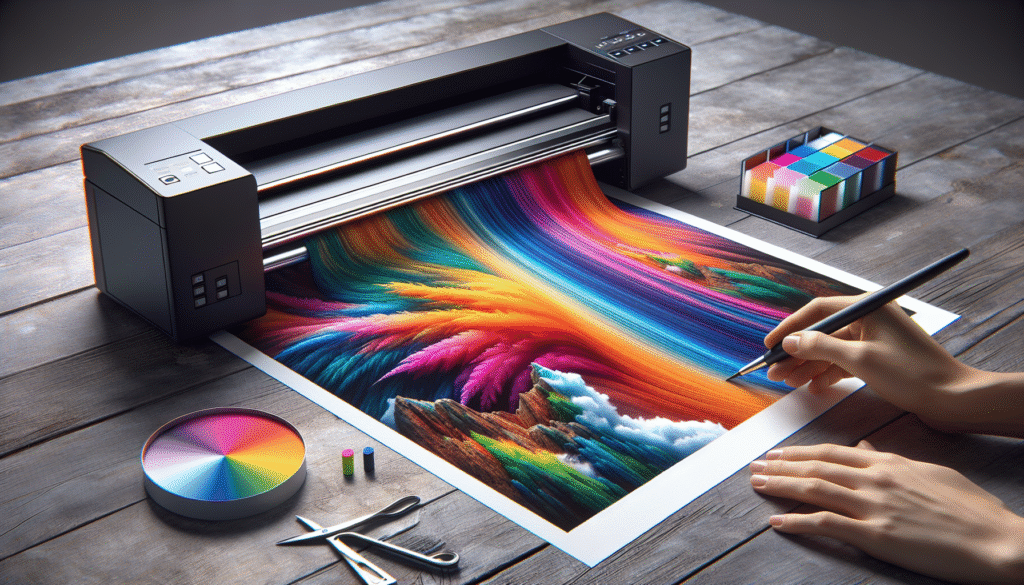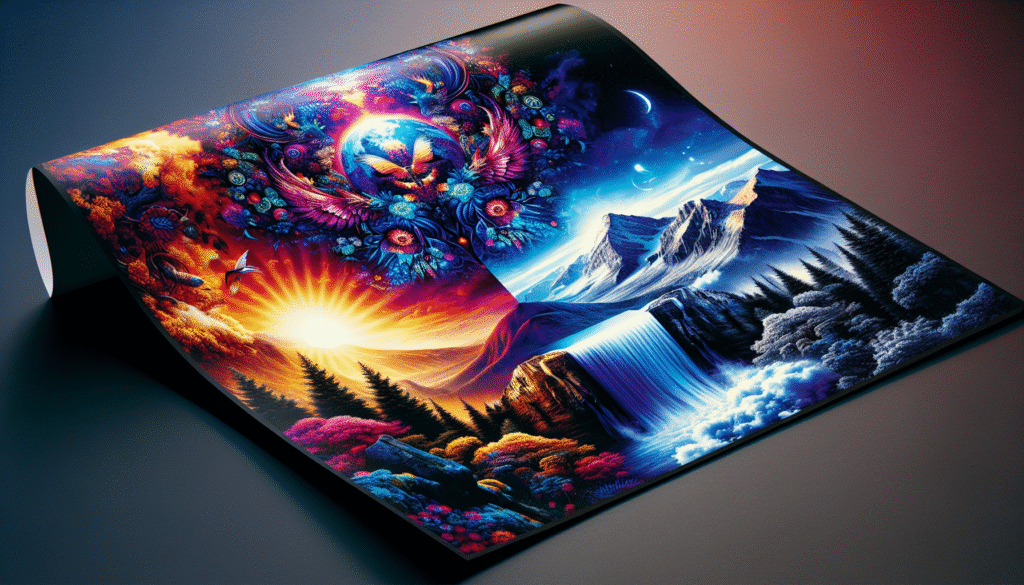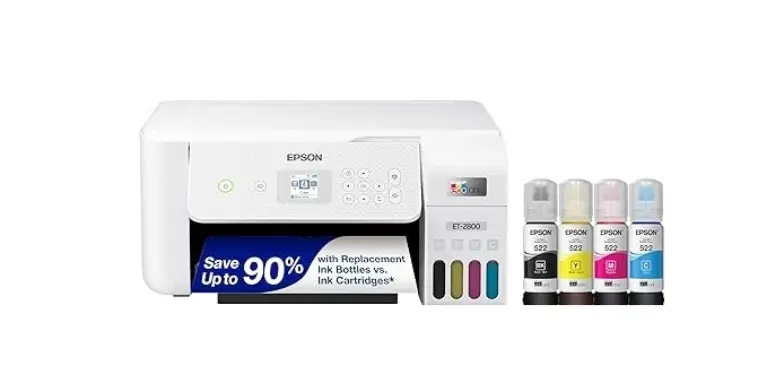Have you ever found yourself wondering which method of photo printing delivers a better result: laser or sublimation? It’s a bit like asking whether cake or pie is the superior dessert—a highly subjective theme that can stir debate. Let’s embark on this illuminating journey together to dissect these two intriguing methods and uncover which one might just bring our cherished memories to life in the most vivid way possible.

Understanding the Basics
What is Laser Photo Printing?
In the realm of photo printing, laser technology stands as a sophisticated marvel. Using electrically charged toner particles that are fused onto the paper through heat, laser printers create images that are crisp and bold. It’s like the confident, always-put-together friend who never forgets birthdays. This process is known for its speed and efficiency, ideal for high-volume outputs without fuss.
What is Sublimation Photo Printing?
Sublimation, on the other hand, takes a slightly more artistic approach. This method involves using heat to transfer dye onto various materials, often producing rich, vibrant results. Imagine a painter meticulously layering colors onto a canvas. With sublimation, the dye transitions from solid to gas, bypassing the liquid stage and infusing its pigments into the fabric or coated surface. The outcome is a product that often feels more ingrained, as if the colors are a part of the material itself.
Comparing Laser and Sublimation
Visual Quality
Let’s address the elephant in the room first—how do these prints actually look? Laser prints often boast sharp lines and clear text, akin to a well-tailored suit. Great for documents and straightforward imagery, laser prints display effectiveness in delivering precision. However, when it comes to capturing those nuanced gradients of a sunset or the tender hues of a flower petal, sublimation often edges ahead. Its ability to blend colors seamlessly gives it an edge, much like wearing a perfectly tailored ensemble at a casual garden party.
Durability and Longevity
Time has a way of aging things gracefully—or not. So, which method ensures our photos don’t just survive but thrive over the years? Laser prints can be resilient, especially on paper stocks, holding up well against the test of time. Meanwhile, sublimation prints, particularly on fabric or specially coated surfaces, tend to resist fading and wear impressively. It’s the difference between a measured, steady symphony and an expressive, jazz-filled crescendo. Both have their charms depending on where and how we plan to preserve these memories.
Cost Efficiency
Affordability has its own allure, much like finding a delightful vintage dress at a flea market. When it comes to finances, laser printing often emerges as the winner. It’s less expensive per page, particularly in large quantities, making it the go-to for budget-conscious projects. Sublimation, indulging in the vividness it renders, can carry higher upfront costs due to specialized inks and materials but pays off in quality.
| Laser Printing | Sublimation Printing | |
|---|---|---|
| Visual Quality | Sharp lines, clear text | Vivid and rich colors |
| Durability | Good on paper, sturdy | Excellent on fabric, resists fading |
| Cost Efficiency | Generally cheaper | Higher upfront costs |
The Science Behind the Prints
The Laser Process
Laser printing is essentially a speedy composer. Here, a laser beam traces the desired image onto an electrically charged drum, promptly attracting toner powder that gets transferred to paper and baked on with precision. This method revolves around quick, exact motion—precision overpoets.
The Sublimation Process
Sublimation is where science meets art. It involves a chemical reaction where dyes, when heated, become gaseous without liquefying in between. This mist of color penetrates the surface, embedding itself like a whisper hidden among pages of a forgotten book. The result is a seamless blend, capturing the richness and depth of life, much like a novel you can’t put down.

Selecting the Right Medium
When to Use Laser Printing
Our trusty laser printer shines brightly in environments demanding efficiency and volume—think offices, large events, or arenas with high document circulation. When sharpness and speed are priorities, and subtlety in color isn’t necessarily the focus, a laser gets the job done with aplomb.
When Sublimation Steals the Show
If our mission is to create something truly spectacular, like a personalized gift or custom garment, sublimation steps forward. Capturing memories in striking colors, it’s perfect for situations where the quality stands paramount, even if that means waiting a little longer.
Environmental Considerations
Laser Printing’s Footprint
While boasting efficiency, laser printing isn’t without its environmental woes. The process often involves high energy use and the disposal of toner cartridges, which echoes the sound of a clunky engine needing an upgrade. However, with recycling programs and energy-efficient models, its footprint is lessening.
Sublimation’s Environmental Stance
Sublimation, priding itself on high-quality output, also treads lightly, given it uses less energy and fewer consumables. However, the use of synthetic materials can raise concerns, much like choosing between paper and plastic. Fortunately, eco-friendly materials are increasingly available, heeding our call for sustainability.
The Impact on Color and Resolution
Achieving Lemonade-Like Clarity
Laser printers are stellar when it comes to crisp, clear lines and text. Whether we’re printing an elegant invitation or a detailed business report, it’s our go-to tool. But when our focus shifts to capturing life’s more colorful sides, such as photographic prints or rich graphics, sublimation holds sway, akin to stepping into vibrant gardens blooming with life.
Handling of Intricate Details
For those tiny, intricate details, precision in selection matters. Laser prints shine in more binary scenarios but struggle slightly in seamless transitions between colors, reminiscent of playing a piano with only the black keys. In contrast, sublimation handles gradients and fine lines with verve, like a rainbow flowing uninterrupted.
| Laser Printing | Sublimation Printing | |
|---|---|---|
| Color Clarity | Great for sharp lines | Excellent for vibrant images |
| Detail Handling | Precise in binary scenarios | Great with gradients and fine lines |
Personal Preferences Play a Role
Evaluating Based on Needs
Choosing between electronic and print books might be easier than choosing between laser and sublimation printing. Each method bears its hallmark strength, making the decision deeply personal, dependent on our specific needs. Do we value speed over detail, or do the colors and gradients of our memories take the front seat?
Personal Aesthetic Preferences
This one’s subjective—distinct as preferred ice cream flavors. Those who favor textural, vibrant visual output might lean towards sublimation, while others may prefer the crispness of laser prints for their day-to-day tasks or specific projects that call for precision without fuss.
Adapting to Technological Changes
Laser’s Evolution
Laser printing technology isn’t stagnant; it gradually adapts, with improvements in speed, energy efficiency, and print quality. It’s akin to watching an athlete’s career blossom over time. These advancements make it appealing not only for routine tasks but also for high-volume color printing when needed.
Sublimation’s Growing Canvas
Likewise, sublimation is weaving itself deeper into the fabric of printing culture—expanding its usage scope and exploring new possibilities with eco-friendly materials and applications on varied surfaces. It’s like discovering a forgotten bookshelf overflowing with hidden treasures, each one opening new vistas of creativity.
Conclusion: Balancing Between Two Worlds
In the end, the question “Which looks better?” depends on what we value most in our prints: speed and precision or color and vibrancy. Like choosing between classic literature and an avant-garde play, there’s no definitive answer—just many roads leading to meaningful, beautiful outcomes.
As we navigate this vibrant world of photo printing, remember that our decision needn’t be a mere binary choice but a nuanced journey appreciating each method’s unique strengths. After all, whether we choose laser or sublimation, we are preserving our stories in dazzling hues and heartfelt shades, one print at a time.
